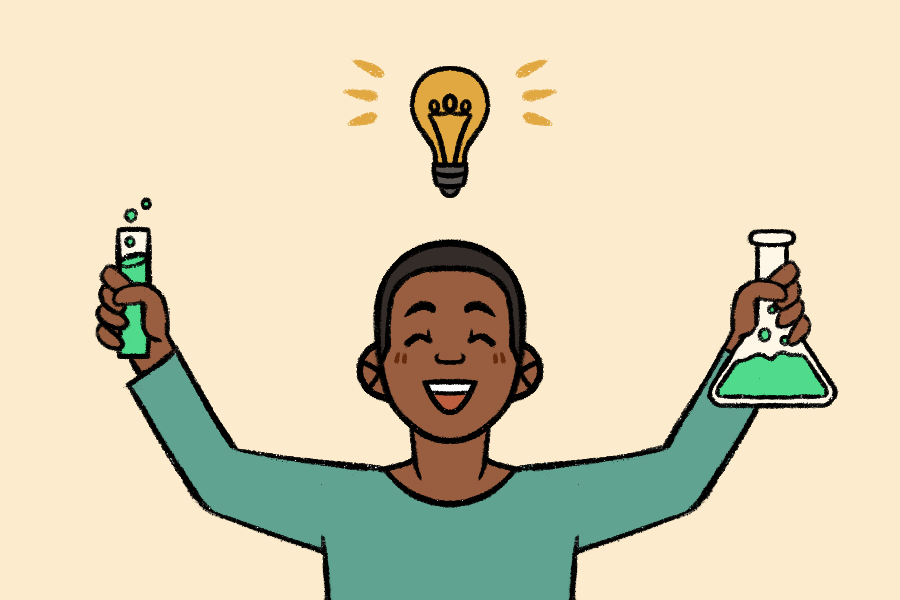Education in action: Students need more simulation-based learning
For students, the unique hands-on connection to the material provides a far better understanding than any textbook or video a student might watch independently.
January 24, 2023
“Homework is due by midnight tonight!” my teacher dictates as in-person class instruction comes to a close. Chromebooks quickly open and phones come out. Soon, the period devolves into an impromptu naptime. This cycle is boring and repetitive for students and dangerous for their academic futures. Engaging assignments are necessary for students to gain a thorough understanding of the curriculum.
On the contrary, simulation-based learning — actively engaging students with assignments — has a unique way of attaching students to their work and aligns with how learning occurs naturally. Teachers, education policymakers and curriculum writers should make simulation-based learning a universal medium of education.
Science and English classes at Whitman best exemplify simulation-based learning as they commonly incorporate labs and class discussions in mock scenarios. However, active learning instruction in only two classes is not nearly enough to meet the academic needs of today’s ever-inattentive generation of students.
Chemistry teacher Peyton Ford builds his classes around active labs to ensure students interact with the material they are learning firsthand.
“[Without labs] I don’t think you can really develop those skill sets and understanding,” Ford said. “It is paramount.”
Building an interactive and engaging learning process increases students’ connection to the curriculum, which in turn ensures better concept comprehension, Ford said. For students, the unique hands-on connection to the material provides a far better understanding than any textbook or video a student might watch independently.
Obtaining a deeper understanding of the material not only helps students prepare for upcoming tests but changes the classroom environment and shapes one’s attitude toward the class, school and education. STEM curricula can often seem linear and boring with complex sets of equations and facts out of context. However, simulations bring the necessary spark for maintaining student engagement and provide real-world applications of the discipline.
“Simulation lets us see what we’re learning,” junior William Wu said. “You get to see all the equations you are learning and how they work.”
English classes also incorporate a basic form of simulation-based learning into their regular instruction through Socratic seminars and, in AP Lang, the election roleplay. Both of these methods provide a way of expanding upon a simple topic and soliciting genuine student engagement from things such as an assigned reading or political discourse, showing the successful application of these methods.
These classes may be the triumph of simulation-based learning. However, implementing these opportunities in so few classes is not enough. This strategy shouldn’t be reserved for certain subjects, it should be universal.
Interactive learning opportunities in classes like math might involve taking physical measurements, causing a greater depth of understanding for students. In history classes, themed debates of a “Supreme Court” or a “Congress” could inspire research into under-researched topics and facilitate a better comprehension of the material.
Perhaps the classes that could gain the most from simulation-based learning are world language classes. These activities are already in most world language classes; the goal would be to amplify these practices. Simple projects like conversations or day-to-day community events in the language would provide a realistic and lasting experience. Even the most basic simulations would provide students with a more memorable use of the language than the endless tests which are still too pervasive.
Teachers don’t have complete control over the day-to-day of the courses they teach, though. Curriculum milestones still dictate not only the “what” but some of the “how” of a classroom. Curriculum writers and education policymakers must give teachers more leeway in leading day-to-day instruction if students are to thrive and respond to how classes unfold.
Simulation-based learning is a model that mirrors how we already learn: through experience. The traditional classroom threatens the most important aspect of the educational experience. Classwork due at midnight should always be the classwork due the next minute. To the extent that they can, teachers must bring reality to the curriculum and the students in the room with them.







